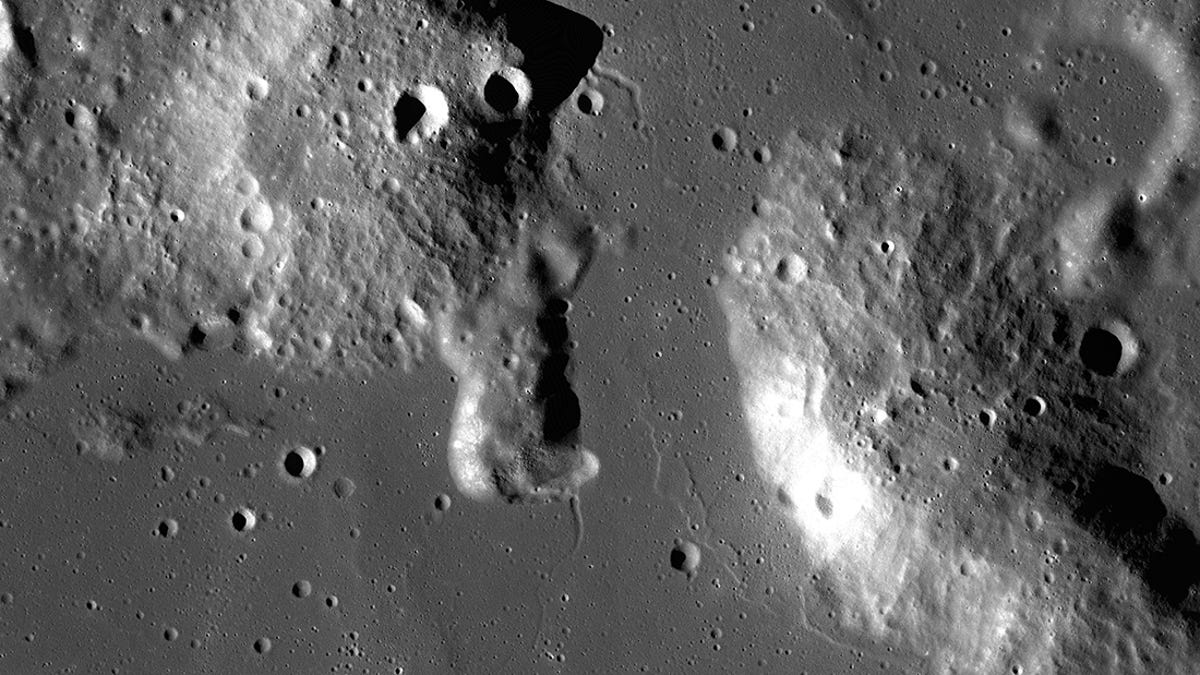NASA Prepares to Solve 'Lunar Mystery' With New Moon Explorer
Oh, and the agency is also sending a bunch of yeast to the lunar surface to see what happens.

NASA is planning to send a lander and rover to the beautiful Gruithuisen Domes, seen in this mosaic.
In the coming decade, NASA is determined to emulate Apollo-era energy by bringing space exploration back to the moon. The agency has a timeline of ambitious missions, collectively dubbed the Artemis plan, poised to culminate in the practical realization of stunning sci-fi fantasies like lunar ground stations, vehicles, power sources and even the "Lunanet."
And on Thursday, NASA announced an update to one such exciting moon project: Solving the puzzle of the Gruithuisen Domes.
Basically, telescopes from here on Earth show scientists that there are a few dome-shaped structures on the moon distinct from surrounding terrain. After years of observation, many concluded the so-called Gruithuisen Domes must be made of a type of magma, or melted rock typically stemming from volcanic activity, rich in silica and similar to the composition of granite.
But there's an outstanding question.
"On Earth," NASA said, "silicic volcanoes typically form in the presence of two ingredients -- water and plate tectonics." Neither of those are available on the moon. Thus, it's still a mystery how the Gruithuisen Domes could've formed. What are they?
So, in tandem with the Artemis missions, NASA is locked and ready to dissect the ins and outs of the strange lunar enigmas with a new science instrument called the Lunar Vulkan Imaging and Spectroscopy Explorer, or Lunar-VISE.
Technically, Lunar-VISE is a combination of five individual components, two of which will be mounted on a stationary moon lander and three that'll be attached to a mobile rover. Regardless, Lunar-VISE will analyze the lunar regolith at the top of the weird domes -- that just refers to a blanket of loose rock and dust at the highest points of these structures.
The goal is to study "geologic processes of early planetary bodies that are preserved on the moon by investigating a rare form of lunar volcanism," said Joel Kearns, deputy associate administrator for exploration in NASA's Science Mission Directorate.
NASA believes this will help decode what the domes' composition really is and that, hopefully, the rest of the Gruithuisen saga will follow. In the grand scheme of things -- beyond finally putting a long-standing lunar puzzle to rest -- this could inform future Artemis missions that'll send astronauts or robots to tread across Earth's glowing companion, because landing any sort of object on the moon could benefit from knowing what all types of lunar landing surfaces are like.
Plus, as a side note, along with their Lunar-VISE reveal, NASA also released details of yet another fascinating science mission for Artemis. In short, the agency plans on sending a certain type of yeast to the lunar surface using a science suite called the Lunar Explorer Instrument for space biology Applications, or LEIA. Then, the team will wait and watch what happens when the organism is exposed to microgravity and space-borne radiation.
It's promising because the yeast they're sending, called Saccharomyces cerevisiae, "is an important model of human biology, especially in the areas of genetics, cellular and molecular replication and division processes, and DNA damage response to environmental factors such as radiation," according to NASA.
In other words, information derived from the Artemis yeast experiment could one day aid biological studies on Earth as well as unravel precisely how space affects the human body. This has proved to be a crucial topic lately, as commercial and science-motivated spaceflight continues to ramp up -- in fact, with enough vigor to suggest we're already in the second iteration of the Apollo years.

